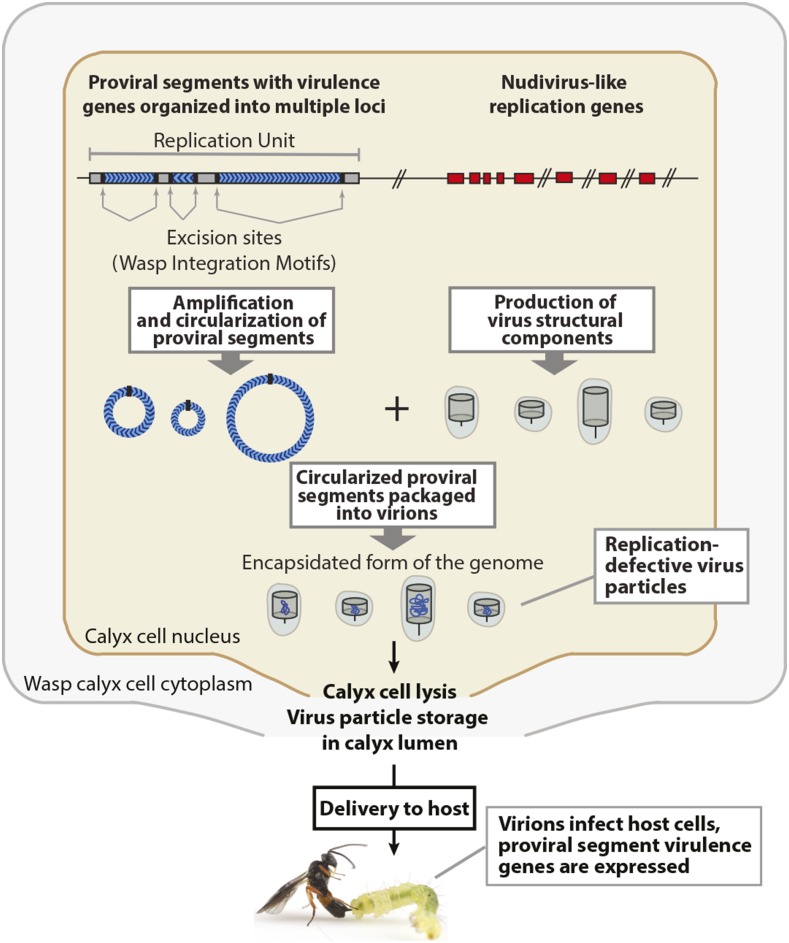Figure 1.
Schematic showing genome architecture and replication of bracoviruses. Proviral segments (shown as blue chevrons) reside in dispersed locations in the wasp genome and contain virulence genes. Proviral segments specifically amplify in the nuclei of calyx cells as Replication Units prior to segment excision and circularization. Nudivirus-like replication genes also reside in dispersed locations in the wasp genome (as indicated by hash marks) and encode proteins required to make virions. Expression of nudivirus-like replication genes in calyx cell nuclei results in formation of virions that package circularized proviral segments. Mature virions are released into the calyx region of wasp ovaries by lysis of calyx cells. Mature virions are replication-defective because the encapsidated proviral segments do not contain nudivirus-like replication genes. Wasps inject mature virions into host insects, which infect different cell types and express virulence genes that affect host immune defenses and growth.

